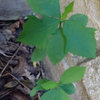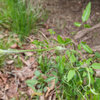Coreopsis cf. tripteris x linifolia
jekeesl (south-central Arkansas)
5 years ago
Featured Answer
Sort by:Oldest
Comments (8)
Jay 6a Chicago
5 years agojekeesl (south-central Arkansas)
5 years agoJay 6a Chicago
5 years agolast modified: 5 years agojekeesl (south-central Arkansas)
5 years agoperen.all Zone 5a Ontario Canada
5 years agojekeesl (south-central Arkansas) thanked peren.all Zone 5a Ontario CanadaJay 6a Chicago
5 years agolast modified: 5 years agojekeesl (south-central Arkansas) thanked Jay 6a ChicagoJay 6a Chicago
5 years ago










peren.all Zone 5a Ontario Canada